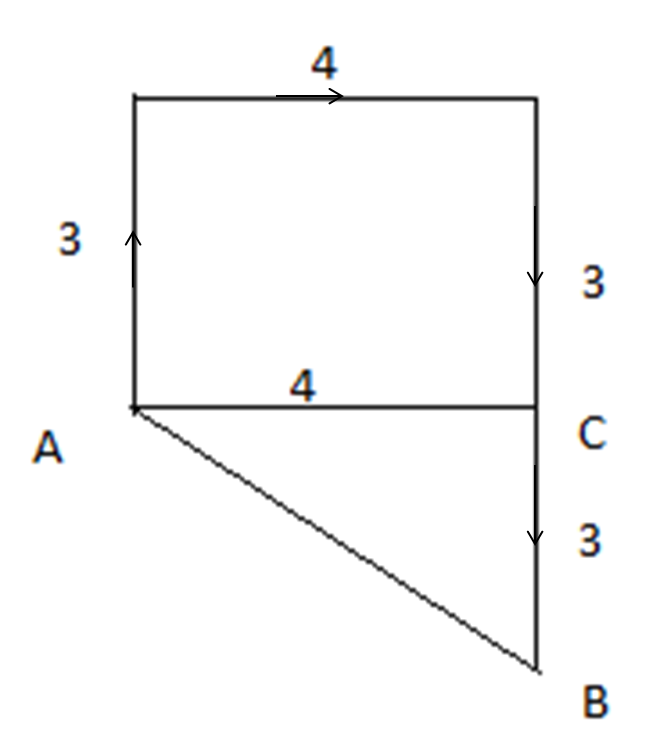9th Grade > Physics
MOTION MCQs
:
B
In motion under gravity, there is a constant acceleration. Hence, the velocity changes with time. Thus, the body covers unequal distances in equal intervals of time. This makes it a non-uniform motion.
:
D
Given:
Initial velocity, u=20 ms−1
Time taken, t=8 s
Let the height of the tower be h.
Assume the upwards direction to be positive.
The magnitude of the displacement is the height of the tower. Final position (ground) is in downwards (or negative) direction with respect to the initial position (top of tower).
∴s=−h
Acceleration is in downwards direction.
∴a=−g=−10 ms−2
From the second equation of motion,
s=ut+12at2,
⇒−h=ut−12gt2
⇒−h=20×8−(12×10×82)
⇒h=160 m.
therefore, height of tower = 160 m
:
A
The average velocity of a moving body can be zero when the displacement is zero.
Average velocity=Total displacementTotal time
Average speed can never be zero because the body will cover some distance while moving.
Average speed=Total distanceTotal time
Since displacement is the shortest path between the initial and final point, it can never be greater than the distance.
So, the average speed is always greater than or equal to the average velocity.
:
C
In a uniform circular motion, the speed remains constant. However, the direction of the body keeps changing. This is due to an acceleration that is perpendicular to the direction of velocity at every point. Hence, the velocity does not remain constant.
:
B
Given:
Initial velocity, u=20ms−1
Final velocity, v=−30ms−1
Final point of motion is the same as the initial point of motion.
As the body comes back to the initial position, the total displacement is 0.
Velocity is defined as the rate of change of displacement.
Therefore, average velocity is 0.
:
C
Given, initial velocity is u, acceleration is a and total time taken is t.
Let s be the displacement of the particle.
From second equation of motion,
s=ut+12at2.
Average Velocity=Total displacementTotal time
∴ Average velocity=ut+at22t
=u+at2
:
C
Let 'u' be the initial velocity, 't' be the time taken, 's' be the displacement and 'a' be the acceleration.
From second equation of motion, we know, s=ut+12at2
Since the object starts from rest, u = 0
Therefore, s=12at2
The motion is uniform accelerated motion. Therefore 'a' is constant.
⇒s∝t2
:
A
Given, initial velocity, u=500 ms−1, final velocity, v=600 ms−1 and time taken, t = 5 s
Let acceleration be 'a'.
From first equation of motion,
v = u + at
600=500+a×5
⇒ a=600−5005 = 20 ms−2
:
D
Given, initial velocity, u=5 ms−1, acceleration, a=−10 ms−2.
Let 'v' be the final velocity and 's' be the height attained.
At the highest point of motion, v=0
Using third equation of motion, v2=u2+2as,
0=52+[2×(−10)×s]
⇒s=1.25 m
Hence the height attained by the coin is 1.25 m.
Let the time taken be t.
Using the first equation of motion,
v=u+at
0=5−10t
⇒t=0.5 s
∴ Time taken by the coin is 0.5 s.
:
A and D

Let the particle start from A and finally reach B as shown. Distance is the length of the actual path taken by it.
In this case,
distance = 3 m + 4 m + 6 m = 13 m
Displacement is the shortest distance between the initial and final position.
Here, displacement = AB
Using Pythagoras theorem,
AB =√(BC2+AC2)
=√(32+42) m=5 m.
















